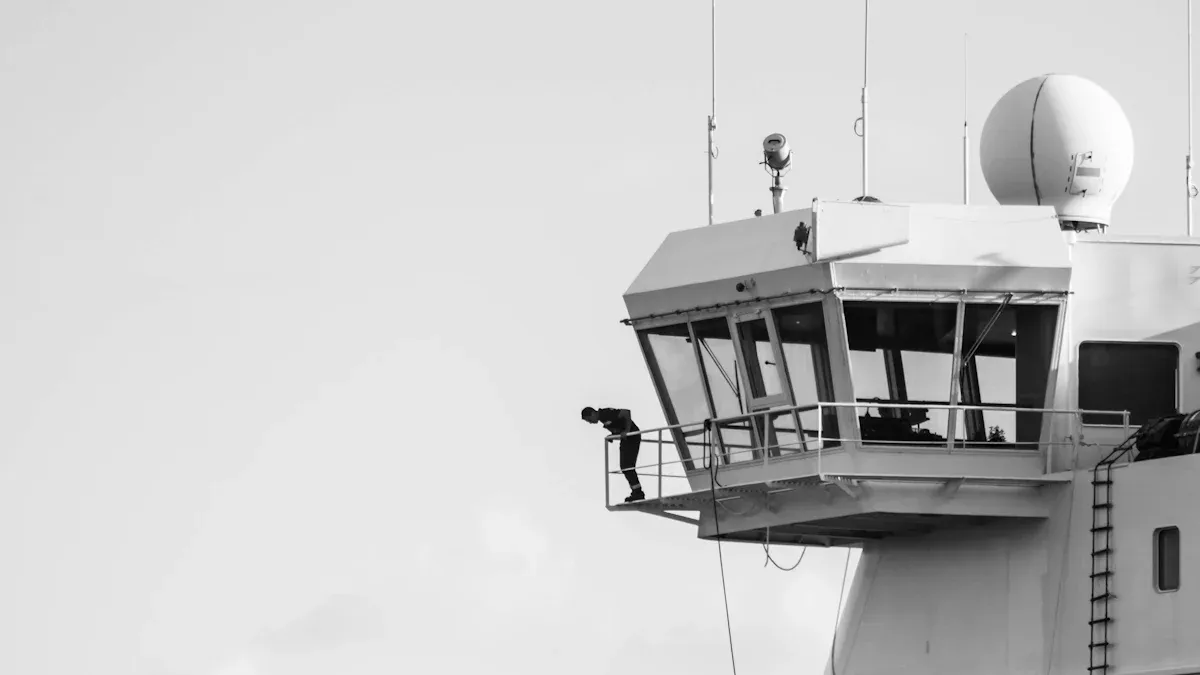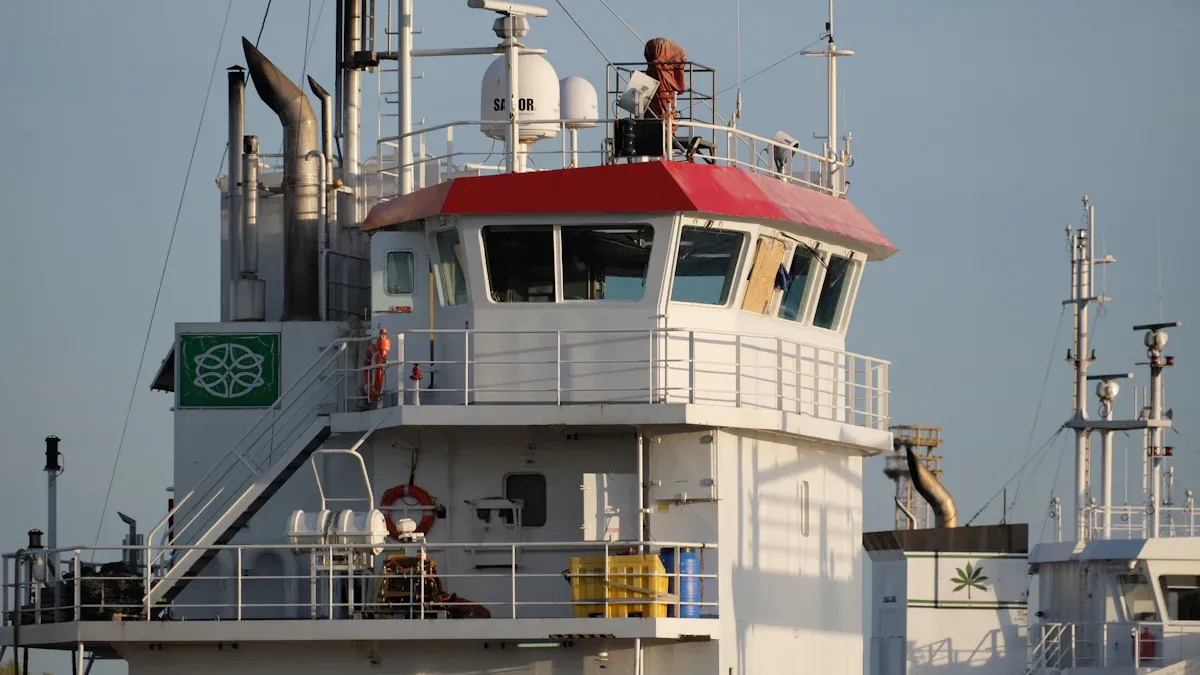
Hazardous chemical zones require dependable communication tools to maintain safety. Explosive atmospheres, containing flammable gases or vapors, present considerable dangers. Marine Telephones with ATEX certification offer robust explosion-proof solutions for these high-risk environments. Devices like the emergency Explosion Proof Telephone are specifically designed to eliminate ignition risks. Additionally, a Marine Industrial Telephone ensures uninterrupted communication during crucial operations, significantly improving both safety and operational efficiency.
ATEX Certification: Ensuring Safety in Hazardous Zones

Definition and significance of ATEX certification
ATEX, short for “Atmosphères Explosibles,” refers to two European Union directives that define safety requirements for equipment used in explosive atmospheres. This certification ensures that devices meet strict safety and quality standards, making them suitable for hazardous environments. Non-compliance with ATEX directives can lead to severe safety risks and legal consequences. Industries such as oil and gas, mining, and chemicals rely heavily on ATEX-certified equipment to protect workers and prevent accidents. By obtaining this certification, companies demonstrate their commitment to safety and align with Europe’s highest explosion protection standards.
How ATEX-certified marine telephones meet safety standards
Marine Telephones designed for hazardous zones undergo rigorous testing to achieve ATEX certification. These devices comply with stringent guidelines to eliminate ignition risks in environments with flammable gases, vapors, or dust. Their explosion-proof design ensures safe operation even in the most volatile conditions. Additionally, these telephones are built with durable materials to withstand extreme marine and industrial environments. By adhering to ATEX standards, these devices provide reliable communication while significantly reducing the risk of fires or explosions.
The role of ATEX certification in preventing explosions
ATEX certification plays a critical role in preventing explosions in hazardous zones. It ensures that equipment is manufactured and tested to avoid ignition sources. Industries like petrochemicals and offshore engineering depend on ATEX-certified devices to maintain safety. These standards protect both workers and equipment by minimizing the likelihood of explosive incidents. For example, Marine Telephones with ATEX certification enable safe communication in high-risk areas, ensuring operational efficiency without compromising safety.
Key Features of Marine Telephones for Hazardous Zones
Explosion-proof design and compliance with ATEX standards
Marine Telephones designed for hazardous zones prioritize safety through explosion-proof construction. These devices meet ATEX and IECEx standards, ensuring they prevent ignition in volatile atmospheres. Their compliance with the ATEX 95 Equipment Directive (2014/34/EU) and ATEX 137 Workplace Directive (1999/92/EC) guarantees suitability for explosive environments. Manufacturers rigorously test these telephones, adhering to conformity assessment procedures and zone classifications. The CE marking further confirms their compliance with EU safety requirements. Equipped with emergency features like loudspeakers and buttons, these telephones ensure safe communication during critical situations.
Durability and resistance to extreme marine and industrial conditions
Marine Telephones undergo extensive testing to ensure durability in harsh environments. Tests such as thermal shock, vibration, and salt fog validate their ability to withstand extreme conditions. For instance, MIL-STD-810G testing evaluates performance under temperature fluctuations, mechanical shocks, and moisture exposure. These telephones also endure drop tests and immersion tests, proving their resilience in marine and industrial applications. Tailored testing protocols ensure reliability, making them suitable for demanding environments like offshore platforms and chemical plants.
Weatherproof and corrosion-resistant materials
Constructed from materials like aluminum alloy or stainless steel, Marine Telephones resist corrosion and physical impacts. Their IP66/67-rated enclosures protect against harsh weather conditions, including heavy rain and saltwater exposure. This weatherproof design ensures long-term functionality, even in the most challenging marine environments. These features make them indispensable for industries requiring reliable communication tools in corrosive or wet conditions.
Advanced communication capabilities for critical operations
Marine Telephones offer advanced communication features essential for critical operations. They support clear audio transmission, even in noisy environments, ensuring messages are delivered without distortion. Emergency communication systems integrate seamlessly with these devices, enabling rapid response during crises. Case studies highlight their effectiveness, such as healthcare facilities improving IT update communications to maintain patient care. These telephones enhance operational efficiency by providing reliable communication in high-stakes scenarios.
Applications of ATEX-Certified Marine Telephones

Use in hazardous chemical zones with flammable substances
ATEX-certified Marine Telephones play a vital role in hazardous chemical zones. These areas often contain flammable gases, vapors, or dust, which can ignite with a single spark. Explosion-proof telephones eliminate this risk by preventing ignition sources. Workers in chemical plants rely on these devices to communicate safely during emergencies or routine operations. Their robust design ensures reliable performance even in volatile environments. By enabling clear communication, these telephones help prevent accidents and ensure quick responses to potential hazards.
Deployment in marine environments, including offshore platforms and ships
Marine environments demand communication tools that withstand harsh conditions. Offshore platforms and ships often operate in remote locations where reliable communication is critical. ATEX-certified Marine Telephones ensure safety and operational efficiency in these settings. Their weatherproof and corrosion-resistant materials protect against saltwater and extreme weather. Signal boosters integrated into these systems enhance cellular reception, minimizing dead zones. The table below highlights their operational benefits:
| Evidence Point | 이름 * |
|---|---|
| Reliable Communication | Essential for safety and operational efficiency in remote locations. |
| Signal Boosters | Enhance cellular reception, crucial for effective communication. |
| Coverage Area | Industrial boosters can cover up to 80,000 square feet, minimizing dead zones. |
| Safety Impact | Strong cell service can save lives and prevent costly miscommunications. |
These features make them indispensable for marine operations, ensuring seamless communication in challenging conditions.
Industrial applications in mining, petrochemicals, and nuclear power
Industries like mining, petrochemicals, and nuclear power require robust communication systems. ATEX-certified Marine Telephones meet these demands by offering explosion-proof designs and advanced communication capabilities. In mining, they enable workers to coordinate tasks in underground tunnels where flammable gases may be present. Petrochemical plants benefit from their ability to operate safely in areas with volatile substances. Nuclear power facilities use these telephones to maintain clear communication during critical operations. Their durability and safety features make them a trusted choice for high-risk industrial environments.
Recommended ATEX-Certified Marine Telephones
Overview of top models, such as the FHF ExResistTel and JREX106-A01
Two standout models in the market for hazardous environments include the FHF ExResistTel and the JREX106-A01. The FHF ExResistTel is a rugged, explosion-proof telephone designed for extreme conditions. It complies with ATEX and IECEx standards, making it suitable for volatile atmospheres. The JREX106-A01, on the other hand, offers a compact design with advanced communication features. Its robust construction ensures durability in harsh marine and industrial settings. Both models are trusted for their reliability and safety in high-risk environments.
Unique features and benefits of each model
The FHF ExResistTel boasts a weatherproof enclosure with an IP66 rating, ensuring resistance to dust and water. Its wide operating temperature range makes it ideal for both freezing and scorching conditions. This model also includes a loudspeaker for hands-free communication, enhancing usability during emergencies. The JREX106-A01 features corrosion-resistant materials, ensuring longevity in marine environments. Its compact design allows for easy installation in confined spaces. Additionally, it supports VoIP technology, enabling seamless integration with modern communication systems. Both models prioritize safety while offering advanced functionality.
Tips for selecting the right telephone for specific environments
Choosing the right telephone for hazardous environments requires careful consideration of key factors. The table below outlines essential selection criteria:
| Selection Criteria | Details |
|---|---|
| Safety Certifications | Explosion-proof telephones meet ATEX and IECEx standards, ensuring safety in volatile atmospheres. |
| Durability | Devices are made from corrosion-resistant materials, ensuring longevity in harsh conditions. |
| Weather Resistance | Waterproof models have IP66/67 ratings, suitable for extreme weather and outdoor use. |
| Key Applications | Used in Oil & Gas, Chemical Plants, Marine & Ports, and Mining for safe communication. |
Matching these criteria to the specific needs of the environment ensures optimal performance and safety. For example, marine environments benefit from weatherproof models, while chemical plants require devices with enhanced explosion-proof features.
ATEX-certified marine telephones provide essential safety in hazardous chemical zones. Their explosion-proof design, durability, and advanced communication features ensure reliable performance in volatile environments.
Investing in these devices protects workers, prevents accidents, and enhances operational efficiency. Reliable communication tools like these are indispensable for industries prioritizing safety and productivity.
제품 정보
What does ATEX certification mean for marine telephones?
ATEX certification ensures marine telephones meet strict safety standards for explosive environments. It guarantees these devices prevent ignition risks, ensuring safe communication in hazardous zones.
Can ATEX-certified marine telephones withstand extreme weather?
Yes, these telephones feature weatherproof designs with IP66/67 ratings. They resist heavy rain, saltwater, and extreme temperatures, making them reliable in harsh marine environments.
Where are ATEX-certified marine telephones commonly used?
These telephones are widely used in chemical plants, offshore platforms, mining sites, and nuclear facilities. They ensure safe and reliable communication in high-risk industrial environments.


